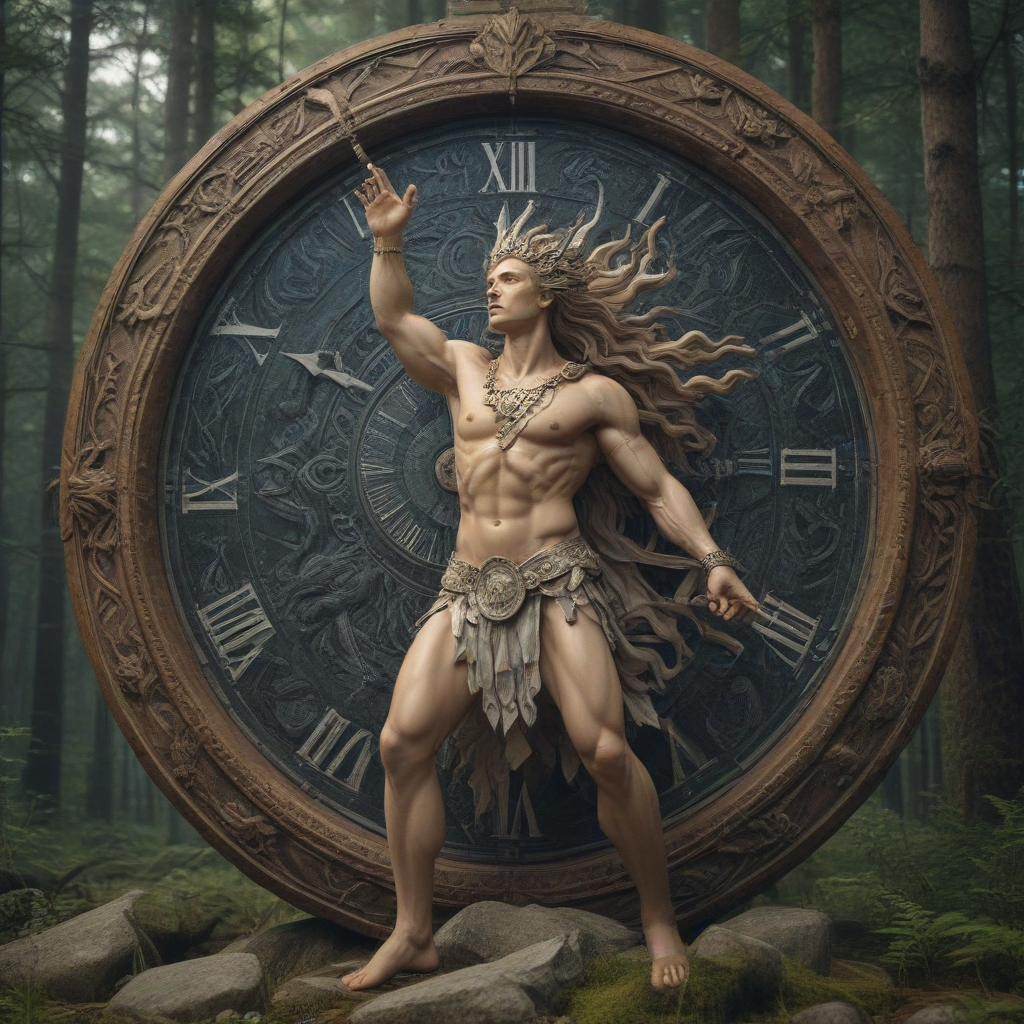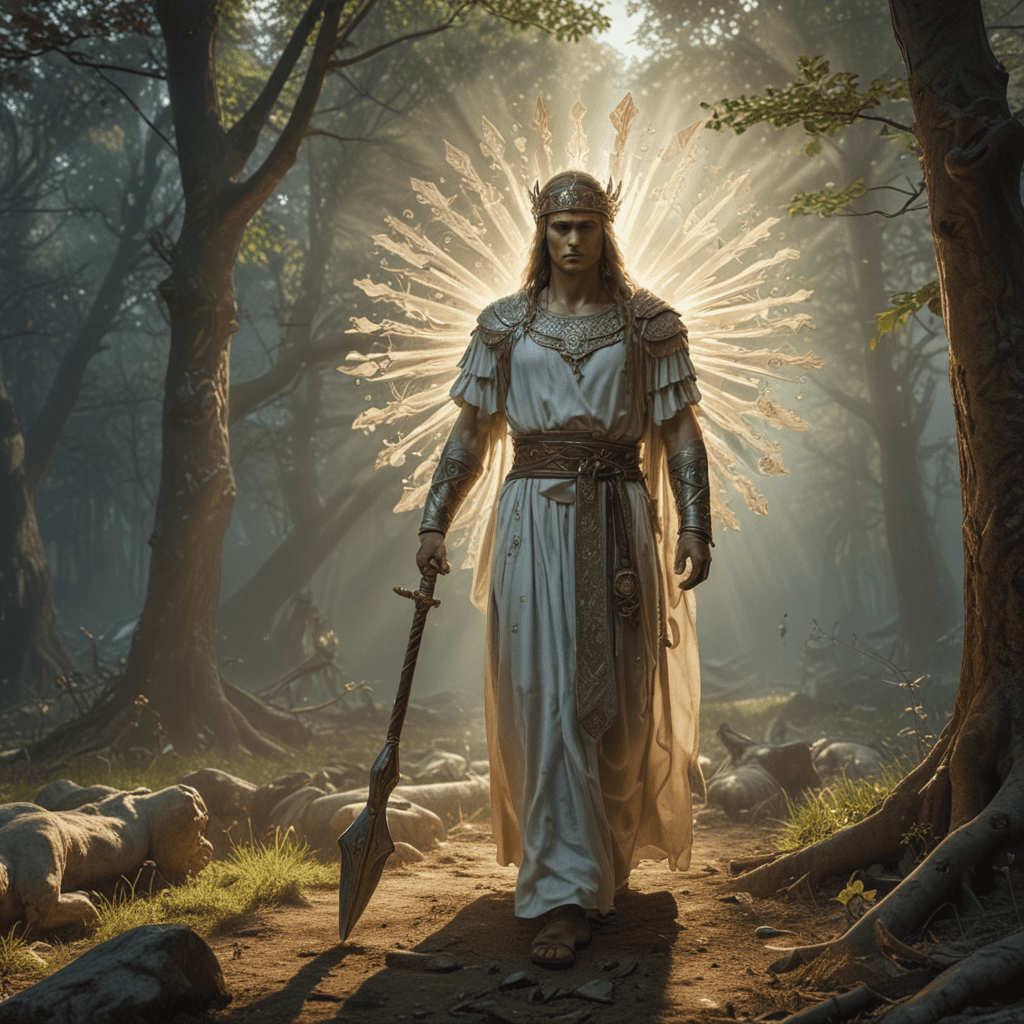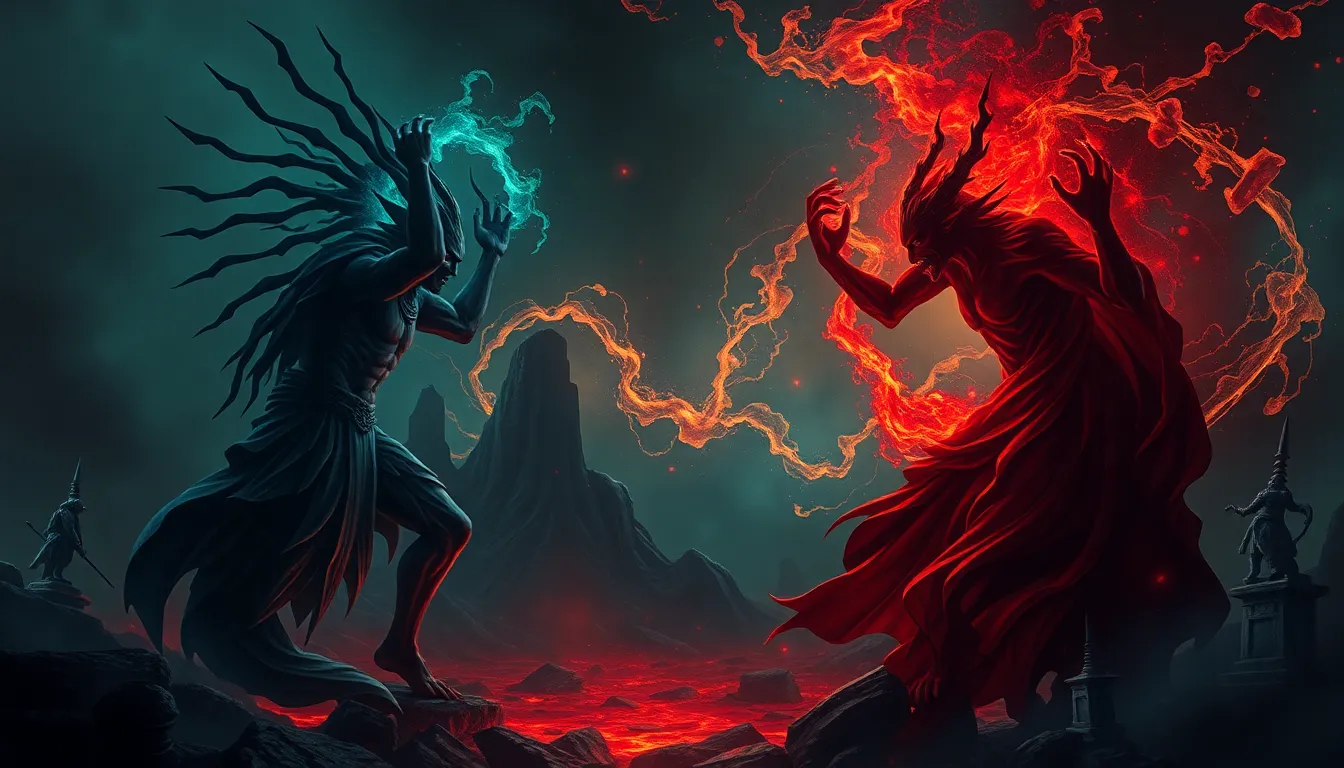I. Introduction
Time, an enigmatic concept that pervades all aspects of human existence, has been a subject of fascination and contemplation for centuries. In Finnish mythology, time holds a profound significance, deeply intertwined with the cyclical rhythms of nature and the spiritual beliefs of the ancient Finns. This article explores the multifaceted symbolism of time in Finnish mythology, unveiling its intricate expressions through various natural phenomena, symbols, and cultural practices.
II. The Cyclical Nature of Time
At the heart of Finnish mythology lies the concept of time as a cyclical rather than linear progression. The seasons, the waxing and waning of the moon, and the daily alternation between light and darkness embody this cyclical understanding. Each cycle is viewed as a renewal and a rebirth, reflecting the belief in the eternal recurrence of life and the inherent order of the cosmos. The cyclical nature of time in Finnish mythology emphasizes the interconnectedness of all things and the harmonious interplay between the temporal and the timeless.
III. Time as a River
One of the most potent symbols of time in Finnish mythology is the river. Flowing relentlessly forward, the river represents the passage of time and the inevitability of change. In the Kalevala, the national epic of Finland, the hero Väinämöinen embarks on a perilous journey down the River of Tuoni, the river of the underworld. This journey symbolizes the hero's confrontation with mortality, his quest for knowledge, and his ultimate return to the land of the living, carrying the wisdom of the underworld. The river, thus, becomes a metaphor for the cyclical nature of life and the transformative power of time.
VI. The Sacred Grove
In Finnish mythology, the sacred grove holds immense significance as a sanctuary of time and wisdom. These sacred spaces, often located in the heart of the forest, were believed to be portals to the otherworld, where time seemed to stand still. Within the grove, ancient trees whispered tales of bygone eras, and the spirits of nature revealed their secrets. The sacred grove served as a place of pilgrimage, where individuals sought guidance, healing, and connection with the past and future.
VII. The Sun and Moon as Symbols of Time
The celestial bodies of the sun and moon played a central role in Finnish mythology, symbolizing the cyclical nature of time. The sun represented the diurnal cycle, illuminating the world with its warmth and light. In contrast, the moon embodied the nocturnal realm, its phases marking the monthly rhythms of time. Together, the sun and moon represented the eternal dance of day and night, reminding mortals of the cyclical nature of existence.
VIII. The Importance of Night
Night held a profound significance in Finnish mythology, viewed as a time of mystery, transformation, and connection with the spirit world. During the long winter nights, the veil between the worlds grew thin, allowing for communication with the dead and otherworldly beings. Nighttime was also a time for storytelling, when elders shared tales of ancient times and passed down the wisdom of their ancestors.
IX. The Role of Memory
In Finnish mythology, memory served as a powerful force against the relentless passage of time. Through oral traditions, songs, and runes, the Finns preserved their history, ensuring that the wisdom and experiences of their ancestors would not be forgotten. Memory became a means of connecting the past and present, bridging the gap between generations and forging a sense of continuity amidst the ever-changing world.
X. Conclusion
Time, in Finnish mythology, is not merely a linear progression but a multifaceted tapestry woven from the rhythms of nature, the symbols of the cosmos, and the beliefs of the ancient Finns. Through the cyclical nature of time, the symbolism of the river, the sacredness of the grove, the celestial dance of the sun and moon, the importance of night, and the power of memory, Finnish mythology offers a profound understanding of the temporal dimension and the enduring human quest for meaning amidst the ceaseless flow of time.
FAQ
Q: What is the cyclical nature of time in Finnish mythology?
A: Time in Finnish mythology is viewed as a cycle, with the seasons, the waxing and waning of the moon, and the daily alternation between light and darkness representing the eternal recurrence of life and the inherent order of the cosmos.
Q: How is time symbolized by a river in Finnish mythology?
A: The river in Finnish mythology represents the relentless passage of time and the inevitability of change. It is a powerful symbol of the cyclical nature of life and the transformative power of time.
Q: What is the significance of the sacred grove in Finnish mythology?
A: The sacred grove is a sanctuary of time and wisdom, a place where time seems to stand still and individuals can seek guidance, healing, and connection with the past and future.
Q: How do the sun and moon symbolize time in Finnish mythology?
A: The sun represents the diurnal cycle, while the moon embodies the nocturnal realm. Together, they symbolize the eternal dance of day and night, reminding mortals of the cyclical nature of existence.
Q: Why is night important in Finnish mythology?
A: Night is a time of mystery, transformation, and connection with the spirit world. During the long winter nights, the veil between the worlds grow thin, allowing for communication with the dead and otherworldly beings.



